Do you hear what I hear?
Posted on | March 3, 2017 | 2 Comments
It was time to burn the gourd vines and the honeysuckle off the 8′ tall chain link fence surrounding the garden. Since that side of the garden faces the neighboring property I let the wildness grow and flourish from spring through summer and even late into winter. But it has to come down eventually or it starts to pull at the fencing. So I pulled down the last of the gourds hiding in the brush, careful to leave their stems and a bit of vine intact. Then I moved them to the other side of the garden and hung them on the fence facing the driveway. Leaving them there to stay dry and and out of the soil until I was ready to scrub them and use them for crafts. I was surprised at how many I found lurking in the overgrowth. And I was also pleasantly surprised at how appealing they looked on the fence. Kind of natural and funky and arty, silhouetted against the winter trees and blue skies.
That night I enlisted Big in burning down all the leftover vines. Clearing the fence involves him managing the propane tank and the weed burner while I follow him around with the hose. We do this after dark so we can see any sparks left behind. And to keep down the spectators. Because sometimes it seems like a safe and effective way to remove brush.
And sometimes it seems a little more burney than safe. Water hose or not.
It does work, though. Now the neighbors will just have to hope I come down to work on the garden in a bra or at least a pair of garden shorts that don’t have holes in private places until the temperatures warm up and the greenery reclimbs the fence, restoring a bit of privacy.
With that taken care of, I spent the next several days working on the spring garden, I got a dumptruck of compost and spent an entire day freshening the raised beds. 8 cubic yards of poop spread out one wheelbarrow at a time. Which sounds horrible except that the compost was right outside the garden gates. As opposed to all the way up the driveway and in the barnyard, where I usually get my compost. It wasn’t easy but it was easier. And sometimes that’s easy enough.
The next day was spent getting the spring garden planted—lettuce, mesclun, chard, kale, spinach, beets, onion, potatoes, peas, and carrots. I found a particularly genius way to mark the seed beds this year. I’ve given up on plant markers that get faded or blown away or buried in the dirt. Once the seeds are in I usually just leave them alone. When they are grown enough to harvest they are recognizable and that works just fine. But this year I stole some transplants from the last remaining fall bed. Which is just barely holding its own against the chickweed.
I pulled up baby spinaches and made a row of them next to the spinach seeds and pulled up baby lettuces and planted a row of them next to the lettuce seeds, etc, etc. Now I will know exactly what is planted where, even before the seedlings show their little leaves. Then, because I am not fooled by 80 degree days in February, I covered all the new seed beds with frost proof floating row covers.
The next day was for ripping up all the burned brush and laying down weed control along the fenceline, around the fruit trees, in the asparagus patch, and in the herb beds. For this I went to our small town newspaper office and collected stacks of free, old newspapers. Then it was just the matter of spreading papers out, wetting them with the hose, and covering them with straw. And spreading papers out, wetting them with the hose, and covering them with straw. And spreading papers out, wetting them with the hose, and covering them with straw. And all that bending and kneeling and standing back up made me long for the easier wheelbarrow and compost day. But it should make a pretty effective barrier against the blackberry brambles and honeysuckle vines and clumps of Johnsongrass that grow thick against the fence and try to choke out the fruit trees. One can hope.
Because this is the first year that the peach tree….
and the cherry bushes….
are blooming. So I hope to keep the weeds down in order to help them out.
But this post isn’t about all the oh-so-exciting-garden-stuff I do on my days off. Although, it’s true: all that free newspaper is very exciting!
Almost as exciting as all the preying mantis egg cases I found while I was clearing brush. Last year I hatched 5 egg cases and released the itty bitty mantids into the garden. I didn’t notice a decrease in the squash bugs and I only saw 2 or 3 adults in the garden later in the season. But so far I’ve found 11 egg cases. Not exactly a 54 billion dollar increase in defense spending but a good return on my $8 investment!
But this post is not about all that excitement. It is actually about those gourds. Remember those gourds that I hung on the fence?
While the spring sunshine waxed and waned, while temperatures rose to the 80’s and dropped back to the 50’s and rose again, while the spring garden slowly emerged from winter’s detritus, the gourds hung on the fence. Tapping against the chain link in gentle breezes. Knocking into each other with sudden gusts. A random yet distracting backbeat to my efforts. The sound drew my attention again and again as I worked. An orienting response that just wouldn’t quit.
Scientists recognized the orienting response as early as the 1800’s but I only really learned about it when I read Animals in Translation: Using the Mysteries of Autism to Decode Animal Behavior by Temple Grandin. Essentially, the orienting response (or orienting reflex) is a being’s response to novel stimulation or change in environment when that stimulation is not aversive or sudden enough to cause a startle or defensive reflex. The being’s attention is focused on the stimulus, using a variety of the senses to process, identify, or categorize it. So my ears led my eyes to the sounds that I heard—-the tapping, the knocking—-and my brain told me that it was just the gourds moving in the wind. Just those gourds again. Natural, funky, arty gourds. Just gourds.
Just a normal orienting reflex to a new sound in the garden.
But then something odd happened. I kept looking. I kept listening, even when I didn’t look. It was only a small sound. Yet I could hear that gentle tapping even above the louder music of the radio playing in the garden. I heard it over the mockingbird singing in the crepe myrtle, the mourning doves cooing on the telephone line, and the rooster crowing in the barn. I heard it over closer sounds like the scraping of the shovel, the crackle of the newspapers, the swishing of brush as I pulled it away.
The reason that’s odd is because a repeated stimulus (that is not harmful) usually results in habituation. Habituation means the stimulus no longer elicits the orienting response—I knew what was causing the noise, I didn’t need to look at the gourds anymore. I knew the gourds didn’t cause any threat to me—-I didn’t need to listen to them anymore. And still….
It was that sound. It was so….familiar? So reminiscent of….what?
At first it reminded me vaguely of wind chimes. I have a set of wind chimes that hang off my deck. My mother-in-law gave them to me years ago and I hung them off the deck so I could enjoy the sound but the kids couldn’t break them get their hands on them. They are large wind chimes with wide aluminum tubes and a wooden clapper and wind sail. Like most manufactured wind chimes, my wind chimes can produce recognizable notes and pitch, even though the sounds occur at random intervals.
But regardless of the sounds produced by my wind chimes, its music produces a wealth of memories. The deck has been the location of almost every playgroup, every coffee klatch, every birthday party, Easter egg hunt, Halloween bash, every gathering of my children’s younger years. All the while, those chimes jangling in the background. In a quiet moment by myself on the deck, the wind chimes will strike their chords and I can immediately hear the clamors of my children and still feel their sticky cupcake frosting hands.
Every person can probably relate to the flood of memories attached to a particular sight, sound, or smell. Scientists have proven that the sensory cortices in our brain don’t just store the information necessary for survival, but emotional meanings of sights, sounds, or smells related to our experiences as well. There are actually locations all over our brain that record and recall sensory memories. And it felt like those gourds were triggering something in my brain. My mind was digging for the connection. Searching…searching….
But the gourds didn’t ring as clear as my wind chimes. Their sound was muted and solid. A thunk. A thud. A low resonance. A tap on a wooden door. A stick run along a fence. A finger roll on a tabletop. What was that sound really? Where had I heard that sound before?
Like most people I’ve heard gourds used as music instruments. The rattle of maracas or shekere, the cascade of rainsticks or rasps, the thrum of a drum. But this sound wasn’t that recognizable. It was something else, something more primitive, less refined. But….what? Gourds may be an ancient source of sound but gourds on a chain link fence? Well, chain link fence wasn’t around until the mid 1800’s so….not so much ancient as industrial. Maybe it was just that the sound was a disruption in the usual soundscape of my garden. In a discussion of ecomusicology Jeff Todd Titon noted:
“Although specialists debate finer points, the basic idea of soundscape—it’s a back formation from landscape—has to do with the environment of sounds that surround living beings, and inorganic things too for that matter….So the soundscape is always with people who are hearing, and with all creatures. People are not aware of soundscapes very much. But of course if you think about it, each place has its characteristic sounds—the place that you live, your schoolroom, this building, the hotel where we’re staying—where they’re doing construction, some of you probably heard that. I think we can take some lessons from the natural world. One hundred fifty years ago Henry David Thoreau understood that species in the natural world adapted by more or less carving out a niche in which they could communicate through sound. Of course, sound isn’t the only way through which creatures in the natural world communicate. They do it through sight and smell and touch too. But sound is a very important way: in terms of frequency and timbre—that’s the tone quality that makes a trumpet and a piano playing a note of the same frequency sound different from each other—and in terms of duration and rhythm and silence and so forth, each species carves out its own particular niche in which to communicate with other members of that species. Today we call that the acoustic niche hypothesis.”
Perhaps the garden’s acoustic niche was thrown off by hanging those gourds on the fence. Maybe that’s why their sounds kept drawing my attention. Maybe that’s why I couldn’t help but stop and stand, watching them sway in the breeze, feeling their music tapping on my ears. Because that’s what was happening. Sound is heard because sound is actually touching you. Daniel Bernaud Roumain, a violinist, says in The Power of Music by Elena Mannes :
“You know when someone says that a piece of music ‘touched me’ or ‘moved me,’ it’s very literal. The sound of my voice enters your ear canal and it’s moving your eardrum. That’s a very intimate act. I am very literally touching you, and when you speak to me, you are literally touching me. And then we extend that principle to the sound of a violin.”
Or the sound of a gourd on a chain link fence.
The attention-grabbing skill of those gourds on the fence is still a mystery to me. I still can’t exactly place that sound. Which makes it just another mystery in the sometimes inscrutable, always magical, place called the garden.
I assume the noise will eventually be absorbed into the soundscape of the garden and I will become habituated to the gourds’ tapping and knocking. But who knows? When those gourds are finally pulled off the fence, scrubbed and painted, off to other locations and uses as birds nests or bowls or decor, will I notice their absence? Research says I will.
“…In the 1950s, another Russian scientist, Eugene Sokolov, systematically studied the OR [orienting response], and the consequences of repeated presentations of novel, but inconsequential events. Sokolov carefully documented what Pavlov had found: With repeated presentations of a novel event the OR becomes weaker and weaker until it no longer occurs. Sokolov termed this gradual decrement in the OR with repeated presentations of a novel stimulus ‘habituation’. You might recognize this as a process called ‘familiarization’. Indeed habituation is simply the process of becoming familiar with the environment around us. So what’s the big deal?? Well, is it true that once we become familiar with things, we no longer ‘pay attention’ to them? Is orienting and habituation really a matter of attracting (or losing) one’s attention…While we are at it, if we come to not even notice inconsequential events, do we no longer perceive them?
Sokolov considered this last question, and made one of his most important discoveries. Let me describe one of his experiments in some general terms. Sokolov presented a novel tone to some of his subjects and recorded an OR. As predicted, with repeated presentations, the OR gradually disappeared. You may not be surprised to find that if he changed the tone (made it higher or lower pitch, for example) the OR reappeared. By the way, he termed the reappearance of the OR due to a change in the stimulus ‘dishabituation’. You may also not be surprised to find that if he made the tone slightly louder dishabituation also occurred. However (here’s the important one) the OR also reappeared if he made the tome softer (less loud).
What’s the big deal??? If one learns that the tone is unimportant and no longer processes it, then how is it that a change can be detected? While we may not consciously process the tone (and it no longer gets our attention) our brain must be processing the tone (albeit at a subconscious level) in order to detect the change. One could imagine a gate-like mechanism that would only allow a different or louder tome through, but this won’t work to explain dishabituation to the softer tone.”
Sound is a tricky thing. Apparently we are even hearing the things that we don’t hear anymore. Which makes us almost as magical as the garden. That’s good. Because I think I’d like to be the garden when I grow up. Fattening gourds with the heat of summer. Sprouting lettuces as crisp as the fall temperatures. Sheltering egg cases safely through the winter. Dregs consumed by fire. Impetuous blossoms bursting forth in a precarious spring. Maybe then I’ll understand the Morse code those gourds are tapping out on the chain link fence. Maybe it’s just a message from the next life. Or the past one.
Can you hear it?
Comments

2 Responses to “Do you hear what I hear?”
Leave a Reply
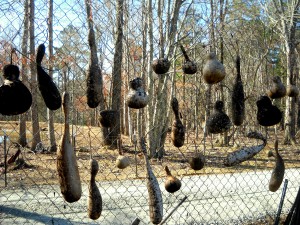
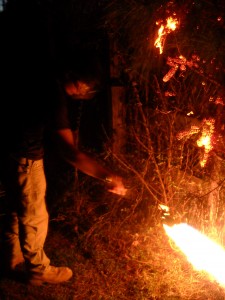
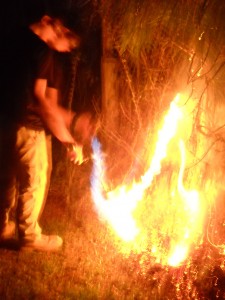
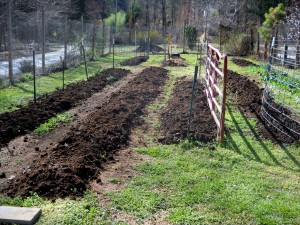
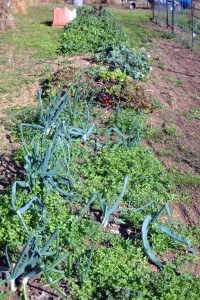
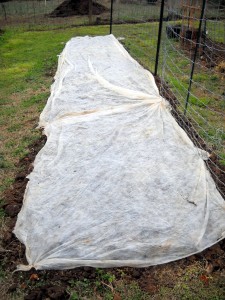
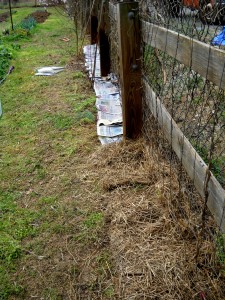
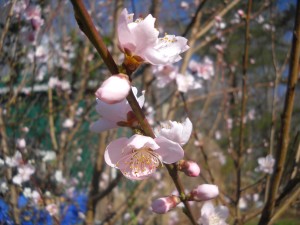
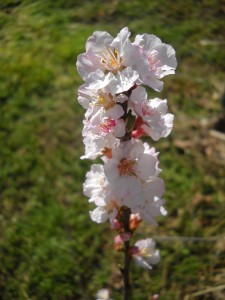
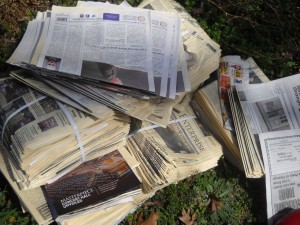
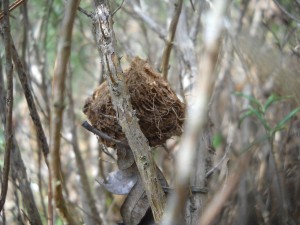
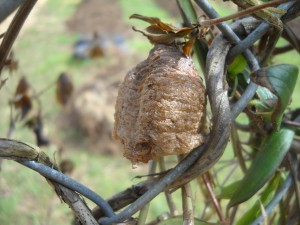
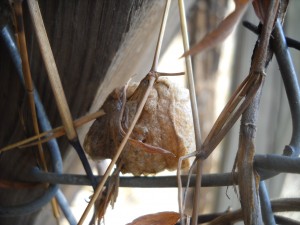
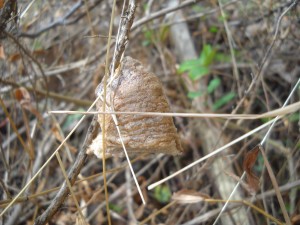
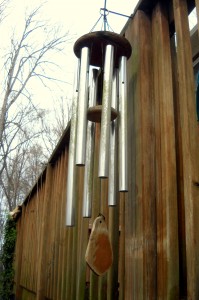


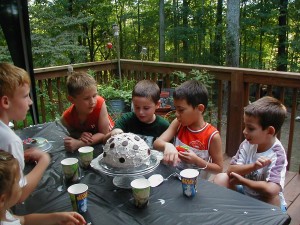




March 3rd, 2017 @ 7:50 am
Nice. Bucolic and thoughtful. Something to think about while I work on our garden (putting stucco on a wall actually).
June 29th, 2017 @ 9:31 am
Miss your posts! Are you off on another trip?